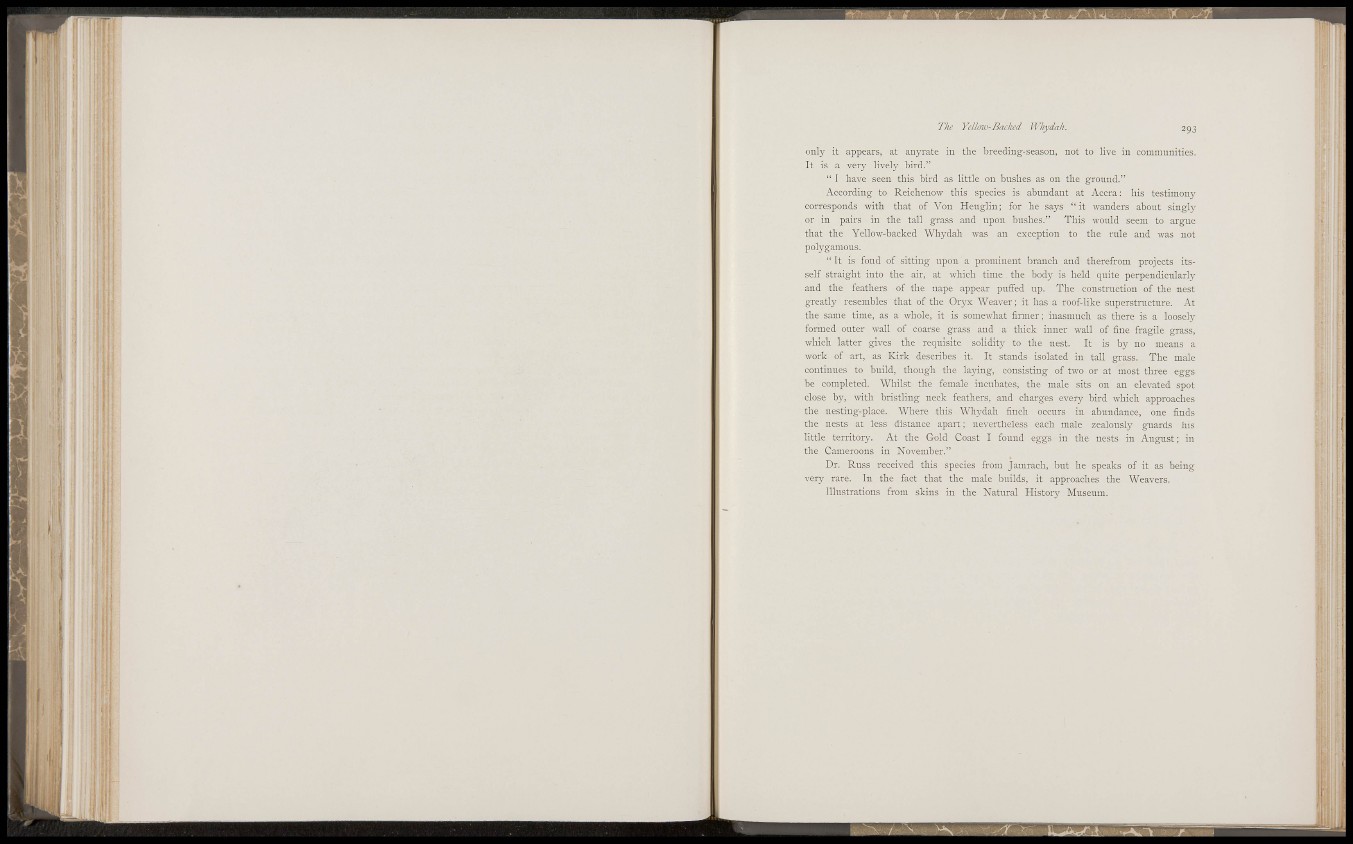
3
Si ! !
Hi 'f
i;: • 'I :
i i i
T h e Y e l l o i v - B a c k c d W h y d a h .
ii'l
i il.
\ ' f l J i
! i
\ k
• f
only it appears, at anyrate in the breeding-season, not to live in communities.
It is a ver}.' lively bird."
" I liave seen this bird as little on bushes as on the ground."
According to Reichenow this species is abundant at Accra: his testimony
corresponds with that of Von Heuglin; for he says "it wanders about singly
or in pairs in the tall grass and upon bushes." This would seem to argue
that the Yellow-backed Whydah was an exception to the rule and was not
polygamous.
" It is fond of sitting upon a prominent branch and therefrom projects itsself
straight into the air, at which time the body is held cpiite perpendicularly
and the feathers of the nape appear puffed up. The construction of the nest
greatly resembles that of the Oryx Weaver; it has a roof-like superstructtire. At
the same time, as a whole, it is somewhat firmer; inasmuch as there is a loosely
formed outer wall of coarse grass and a thick inner wall of fine fragile grass,
which latter gives the recjuisite solidity to the nest. It is by no means a
work of art, as Kirk describes it. It stands isolated in tall grass. The male
continues to build, though the laying, consisting of two or at most three eggs
be completed. Whilst the female incubates, the male sits on an elevated spot
close by, with bristling neck feathers, and charges ever3' bird which approaches
the nesting-place. Where this Wli}'dah finch occurs in abundance, one finds
the nests at less distance apart; nevertheless each male zealously guards his
little territory. At the Gold Coast I found eggs in the nests in August; in
the Canieroons in November."
Dr. Russ received this species from Jamrach, but he speaks of it as being
very rare. In the fact that the male builds, it approaches the Weavers.
Illustrations from skins in the Natural History Museum.
% I
il;- , ri